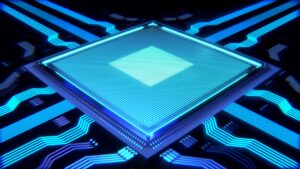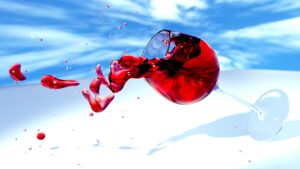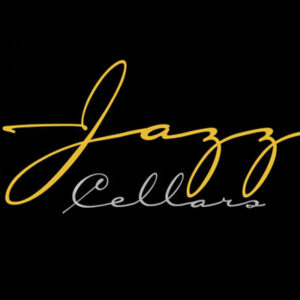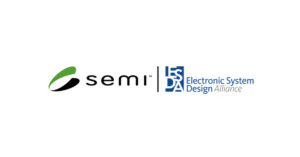
Bridging the Frontier Bob Smith, Executive Director
Bob Smith is Executive Director of the ESD Alliance responsible for its management and operations. Previously, Bob was senior vice president of Marketing and Business Development at Uniquify, responsible for brand development, positioning, strategy and business development activities. Bob began his … More » Chips and Wine: It’s All About the ProcessJanuary 10th, 2022 by Bob Smith, Executive Director
From a high-level view, what do chip design and manufacturing have in common with winemaking? It turns out that, in both cases, it’s all about the process. Although I have spent much of my career in the semiconductor, EDA and IP industries, I have had the opportunity to participate in a small, commercial winemaking venture called Jazz Cellars for the past 16 years. It might sound like a stretch (so bear with me) but I think there are some interesting parallels and a few significant differences between the processes involved in producing wine and semiconductor chips.
Let’s look at some of the similarities between the processes involved in winemaking and chip design. For the sake of discussion, I am assuming a generalized, high-level description of the processes involved. Both processes start with an initial plan. For the chip, the plan is the system design and global specifications for the chip –– its functional spec, operating speed, power consumption, target process technology, interface, package type, and the like. In winemaking, the plan describes what type of finished wine we are trying to achieve. This includes the varietal of grape and the profile of the finished wine. For example, we may decide to make an aggressive red wine with a strong tannin profile that will age for a long time or we may decide that we want to make a soft, fruit-forward wine that will be easily drinkable early on. Now that the plans are in place the design work begins. The “raw material” for the chip design process typically starts with system-level design code and/or RTL code and IP that is then transformed into a logic design. Simulation and verification are used to ensure that the functionality, timing, and other aspects of the design conform to the specifications. In winemaking, the raw materials are freshly harvested grapes. Similar to RTL code being converted to logic, the harvested grapes are sorted to remove extraneous materials quickly de-stemmed to remove the stems and sometimes crushed to extract more juice from the fruit. The resulting mix of juice and skins is referred to as “must.” Verification is based on chemistry (sugar level, pH, titratable acidity, etc.) and if needed, additions are made to the “must” so that the winemaking process starts on plan. The next step in both processes is one of significant transformation. In chip design, the logic is transformed from a symbolic representation into geometrical patterns that will be used to manufacture the actual chip. Verification of the resulting physical design is critical to make sure that the design still represents the intent of the original design spec and that the layout conforms to the design rules of the chosen manufacturing process. Getting the design ready for “tape out” (hand-off to manufacturing) can be a long and iterative cycle given the complexities of today’s nanometer processes. Fermentation is the analogous step in the process of winemaking. During this step, the “must” is converted into wine by yeast that converts the sugar into alcohol and carbon dioxide. Like physical design in the chip world, this step can also get complicated. Fermentation may be hard to start, may go too quickly and result in high temperatures, or may stop unexpectedly. Some fermentations go like clockwork while others are entirely confounding. Following the completion of the fermentation process (the sugar is depleted), the wine is pressed to separate the wine from the skins in the case of a red wine. White wines are pressed shortly after harvest so that the wine does not absorb color from the skins. We are now at the last step of the process. The “taped-out” chip design is released to manufacturing where masks are made and prototype chips are fabricated. After verifying that the prototype chips meet spec and are manufacturable, the chip can be released into volume production. This is an extremely simplified view as there are many detailed and time-consuming steps involved in getting a design into production and re-design is often needed before volume manufacturing can begin. It should also be noted that the costs of putting a complex chip into production in a leading-edge process requires an investment that is orders of magnitude higher than that required for winemaking. In winemaking, the fermented wine goes into barrels for aging that is the next to last step of the production process. Numerous steps along the way must be tended to during the long aging process including topping off the barrels (due to evaporation), malolactic (secondary) fermentation, racking, addition of SO2 to prevent the growth of any unwanted yeast or bacteria, and the like. Once the wine has reached the plan goal, it is ready for bottling and, sometime after that, release to the market. There is, however, a significant difference between winemaking and chip production and that is in the repeatability of the processes. Chip designers and semiconductor manufacturers go to great lengths and expense to ensure that that there is very little variation between each chip manufactured. No two chips are exactly alike, but they must be extremely close in behavior and performance. In the case of winemaking, variability is expected. A good winemaker can take the same fruit from the same vineyard year over year and use the same “process” to make the wine and end up with wines noticeably different depending on the harvest year. This is due to many factors including the growing conditions in the vineyard, weather patterns and the natural variability that arises during fermentation and aging of the wine. In this sense, winemaking is a blend of art and science. And, unlike chip making, the pricing of higher-end wines can actually vary depending on the quality of each harvest year. This is one of the reasons that a futures market exists for higher-end wines. Let’s offer a toast to the chips and wine processes –– Cheers!
Engage with the ESD Alliance at: Website: www.esd-alliance.org ESD Alliance Bridging the Frontier blog Twitter: @ESDAlliance |
|
|
|||||
|
|
|||||
|
|||||











